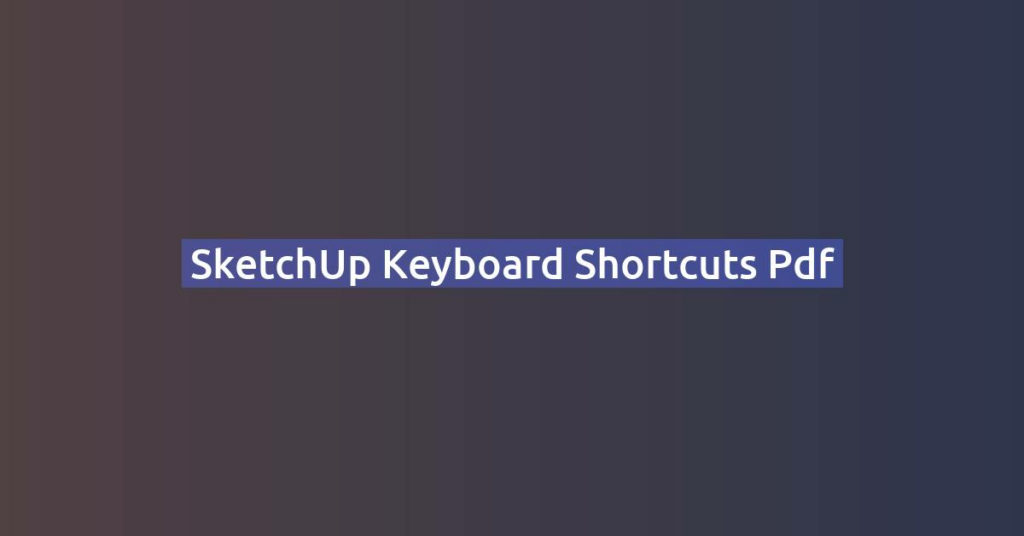Experiencing slowdowns in SketchUp can be frustrating, often due to the size and complexity of your project files. Fortunately, there are several effective strategies to lighten your SketchUp models, enhancing both speed and efficiency. In this comprehensive guide, we’ll explore various techniques and tools, ensuring your modeling experience remains smooth and productive.
Optimizing SketchUp Files Without Plugins
Efficient file management and utilization of built-in features can significantly improve SketchUp’s performance.
Switching SketchUp Versions for File Optimization
SketchUp continually refines its technology with each new version, leading to improved file optimization. For example, upgrading from SketchUp 2021 to 2022 can reduce file size by up to 33%. Additionally, SketchUp Pro 2023 introduces faster saving capabilities, enhancing overall performance.
Concrete Tip: When upgrading to a newer SketchUp version, open your existing project file in the new version and resave it. This action automatically optimizes the file structure and reduces file size.
Disabling Shadows
Real-time shadow calculations in SketchUp can strain system resources, especially during interactive modeling. Reserve shadow settings for final renders or presentations to alleviate computational load. Simply navigate to “View” and toggle off “Shadows.”
Concrete Tip: Create a scene specifically for rendering or final presentations where shadows are enabled. This way, you can toggle shadows off during modeling and enable them only when needed for visual clarity.
Managing Edges and Profiles
Complex models with numerous edges and profiles can hinder SketchUp’s performance. Simplify your workflow by adjusting edge and profile settings:
- Access the “Styles” palette and select “Edit.”
- Navigate to “Edge Settings” and uncheck unnecessary edge and profile options, optimizing performance for models with intricate geometries.
Concrete Tip: For models with organic shapes or detailed architecture, reduce the number of visible profiles to one. This minimizes computational strain without compromising visual clarity.
Purging Unused Elements
SketchUp retains cached data for materials, components, and deleted entities, contributing to increased file size. Regularly purge unused elements to declutter your project:
- Go to “Window” > “Model Info” > “Statistics.”
- Click “Purge Unused” to remove redundant data, effectively reducing file size without compromising project integrity.
Concrete Tip: Make it a habit to purge unused components and materials after major editing sessions or when finalizing a design. This ensures your file remains optimized throughout the modeling process.
Filtering 3D Warehouse Models
SketchUp’s 3D Warehouse offers a vast library of models, but selecting high-detail models can inflate file sizes. When browsing, filter results by size to choose models under 50 MB. Reserve higher-quality models for final presentations to optimize performance during modeling stages.
Concrete Tip: Before downloading a model from 3D Warehouse, check its file size and polygon count. Opt for simpler models or those specifically optimized for SketchUp to maintain smooth performance.
Using Scenes to Manage Visibility
Scenes are invaluable for organizing and presenting designs. Control model visibility by creating scenes that display or hide specific elements:
- Create distinct scenes within your SketchUp project.
- Configure each scene to showcase different aspects of your design, enhancing presentation clarity and reducing computational strain.
Concrete Tip: Utilize scenes not only for visibility management but also for camera angles and shadow settings. Update scenes as your design progresses to maintain consistency and optimize performance.
Implementing Fog Effectively
Fog can obscure distant elements in your model, enhancing depth perception without taxing system resources excessively. Exercise restraint with fog settings to maintain visual clarity and performance.
Concrete Tip: Adjust fog settings incrementally to achieve the desired atmospheric effect. Use fog sparingly, primarily for enhancing spatial depth in larger-scale models or outdoor scenes.
Enhancing SketchUp Models with Plugins
In addition to native optimizations, plugins offer advanced tools for streamlining workflow and optimizing model performance.
Automating Cleanup with Cleanup Plugin
The Cleanup plugin simplifies optimization tasks, consolidating various cleanup actions into a single, user-friendly interface. It efficiently removes unused elements, simplifies geometry, and enhances file performance with minimal effort.
Resizing Materials with Material Resizer Plugin
High-resolution textures and materials can significantly impact file size. The Material Resizer plugin allows precise adjustment of material sizes within SketchUp, optimizing visual quality while minimizing resource consumption.
Download Material Resizer Plugin
Streamlining 3D Models with Skimp Plugin
Skimp simplifies the process of importing and optimizing 3D models in SketchUp. It reduces polygon count efficiently, ensuring smooth performance even with complex models.
Concrete Tip: Use Skimp to reduce polygon count on imported models without sacrificing visual fidelity. Prioritize polygon reduction on background or secondary elements to maintain focus on key design components.
These comprehensive strategies and plugins empower SketchUp users to optimize their models effectively, enhancing performance and productivity. Whether you’re a novice or an experienced designer, implementing these techniques ensures a smoother modeling experience and superior outcomes in SketchUp. Happy modeling!



